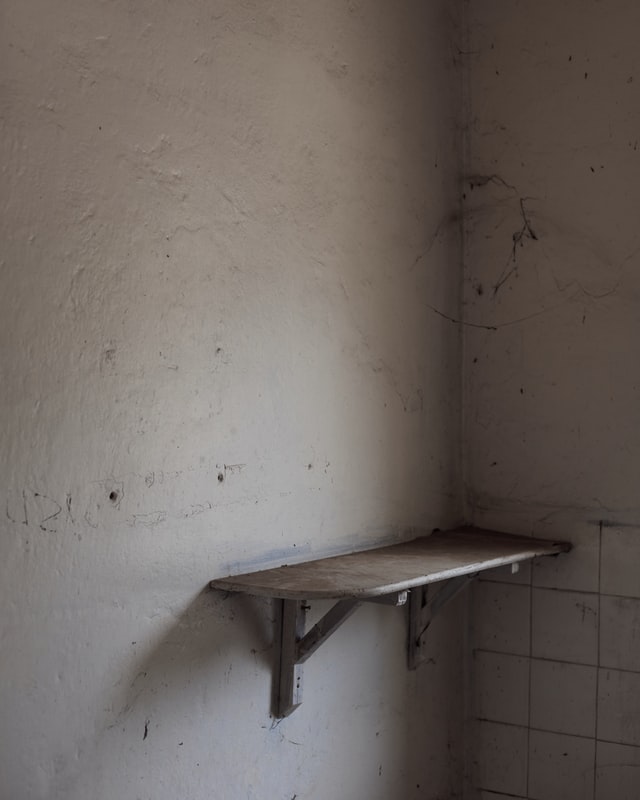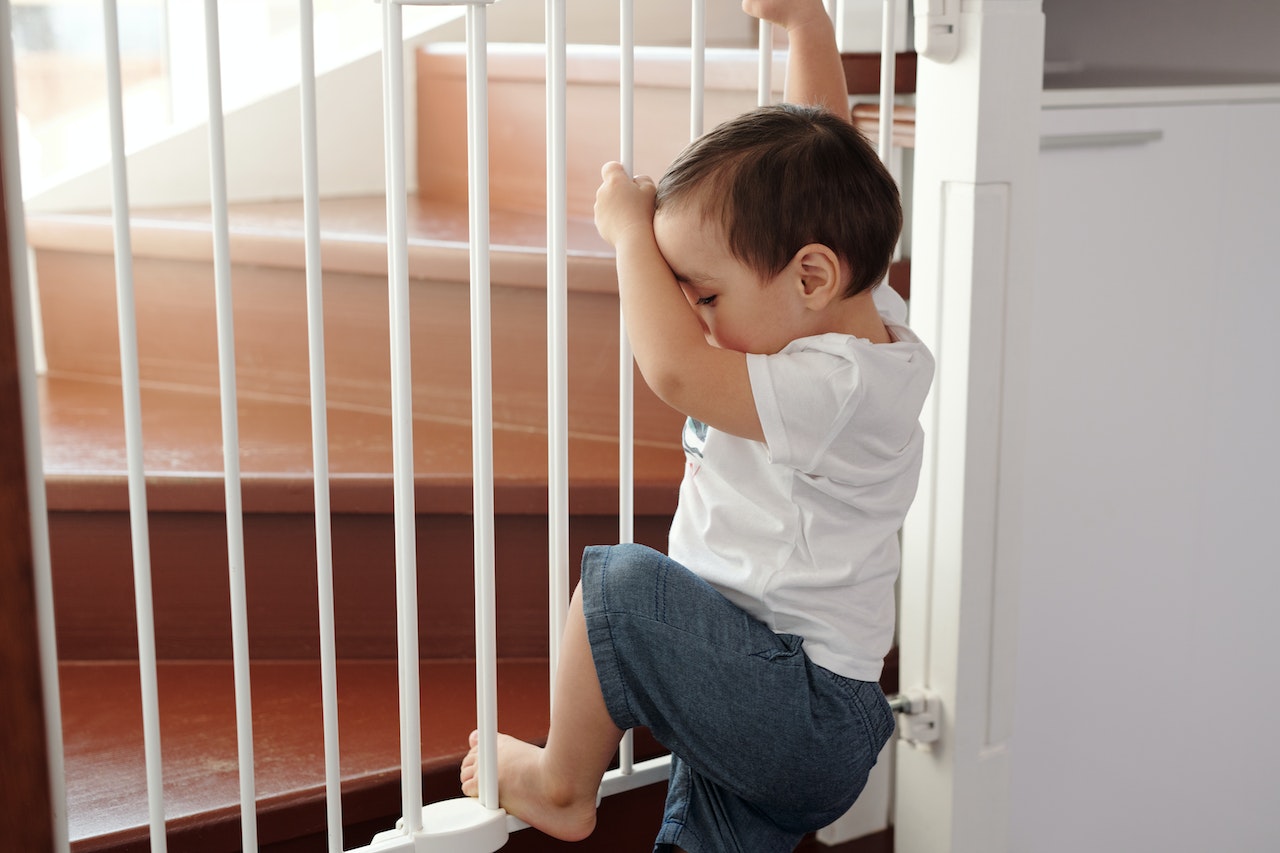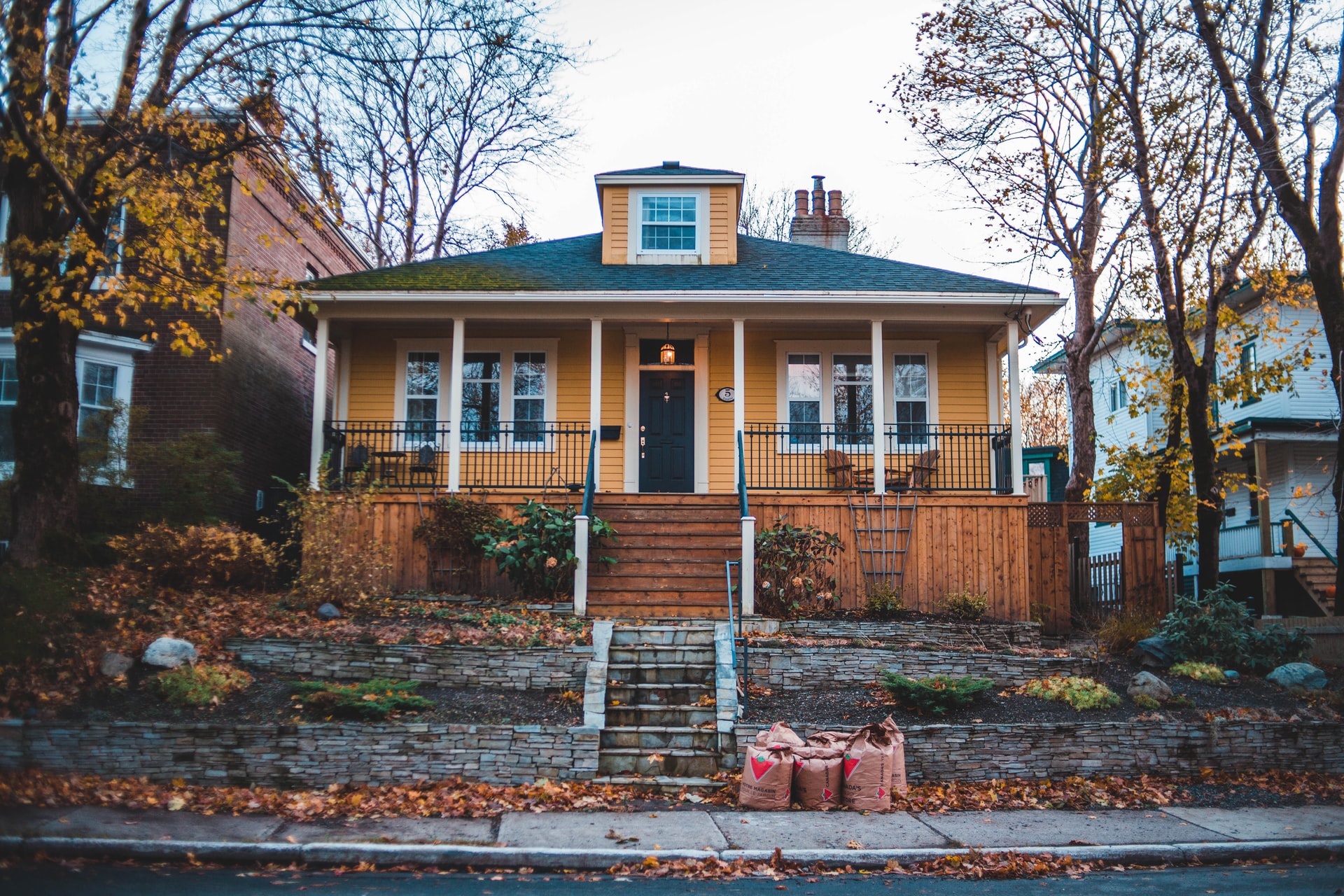Have you ever wanted to sell a property? It’s not that easy. There are a lot of aspects that need to be taken into account. First, you’ll need to get a home inspector to ensure your house is in good condition. This will help you avoid unwanted surprises that can scare potential buyers during the showing. After your inspection is done is essential to repair or even replace things in bad shape.
Another essential part is to declutter, depersonalize and clean. There’s the possibility of putting it in storage or selling the stuff you don’t need anymore. It is essential to create an environment that feels spacious, clean, and comfortable.
Once you are ready to put your house on the market, you would want to stage it, so it’s more appealing to potential buyers, either you show it physically, virtually, or through photographs. Virtual staging, in particular, has gained popularity in recent years as a cost-effective and convenient option for showcasing your property. Either you do it yourself, or you hire someone to. This is vital if you want to sell it quickly and at a better price. That’s why we gathered some professionals in the matter, including experts in virtual staging and photo editing services, to give us their opinion.
Why use virtual staging when selling a home?
It’s no longer a secret that virtual staging sells houses faster, easier, and for a higher price. It helps promote a property listing, attract more interested buyers, get more showings booked, and ultimately increase the perceived value of a home.
Even if a vacant property may look good in professionally taken photos, it’s still hard to get a feel of the space and its true potential without properly scaled furniture or high-end decor. So why not make it easier for your prospects to envision themselves living happily in this beautiful home?
Oleksandr Lanin | Hasten
What are the most common issues related to house staging?
Home staging is not just an option anymore; it is necessary if you want to sell your listings at top dollar. However, that does not make it any easier. Staging a property requires painting walls, decluttering, tidying up the place, and prepping the home for maximum profit. And with the abundant online material available, it is easier to get misguided.
Some of the most common issues that you can face with home staging are:
- Lack of Flow: With different interior style options, picking one that matches the flow of the existing interior is often difficult. Go with an aesthetic that matches the listing and personal style while also keeping in mind not over-personalizing it.
- Ignoring Exteriors: Like we are judged by the clothes we wear, even properties are judged by their exteriors. Yet somehow, we forget to give them the attention they need. Ensure the grass on the entrance is green enough, the walls are painted, and overall, the home is welcoming to the eyes.
- Multiple Focal Points: Too much of anything is harmful. The same goes for having a focal point in a house. Multiple focal points only add unappealing flavor to the home and make the room look cluttered. So, focus on keeping a single focal point like the TV, window, art piece, etc.
Rahul Agrawal | Styldod
What to look for when hiring a professional home stager?
The staging industry is non-regulated, so caveat emptor is in play.
The most important things to consider are results, quality of work, insurance, and caution that price should NOT be your deciding factor on who is selected!.
I know you might be shocked to hear but think about this- you are about to sell the most significant financial asset you have, and risking the accrued equity is the last thing you want. The fee paid will be long forgotten when you receive outstanding results. Using the exemplary Staging service makes you money.
Talented people gravitate to this work, but talent alone isn’t what makes an excellent stager. You want someone who knows how to maximize your investment.
Staging done well involves three steps to prepare your house for sale fully. The important reason for doing this is because buyers want a “move-in” ready house, and 8/10 of them are willing to make a premium for that privilege. You can quickly leave money on the table even in a hot market. Therefore, the stager you chose must have the skills, abilities, and current knowledge of what buyers want and how to incorporate them into the packet you are bringing to market.
Christine Rae | CSP International
What are the benefits of virtual staging?
Virtual Staging is the process of using 3D computer software to place beautiful home furnishings onto vacant property pictures. It helps potential buyers visualize their future home and significantly boosts property appeal.
Virtual Staging is much cheaper than traditional staging because there is no furniture to rent and movers to hire. Virtual Home Staging costs 20 times less than traditional home staging. Time is of the essence for Real Estate Agents when launching new listings. So most virtual staging orders can be delivered in 1 to 2 days.
CJ Singh | PadStyler
What are the Benefits of showing a home virtually?
There are many benefits of providing potential buyers and renters with virtual home tours.
Virtual open homes can provide you with essential data around time spent in each room, contact details, traffic source, etc. The most obvious benefit is the amount of time saved traveling to the open home and the removal of travel barriers, meaning anyone interstate or internationally can view the house via their phone, tablet or laptop from the comfort of the sofa. This generates more ‘digital’ foot traffic through the home than you would achieve by having only a physical open house.
The ‘digital’ foot traffic can increase significantly as people have the opportunity to share with friends and family, and you can also promote your digital open homes on your social media platforms and email lists.
The above benefits assist in generating high-quality leads, as buyers/renters have already explored the home virtually and are further along the decision-making process towards buying the house.
Steven | Property Render
What is the role of a real estate copywriter in virtual staging?
Even before the pandemic, touring properties virtually was a thing. Today, it’s becoming a basic need to attract buyers and increase desire. These engaging tours create something that a video can’t, and leading brands use interactive, gamified experiences. And with this experience, the need for customer-centered copy intensifies.
Imagine walking (digitally) into a home you desire. It has two floors. You finished “walking” around downstairs, and want to go up to the main bedroom. When you hover around the stairs with your mouse, nothing happens, and if you click, you “teleport” upstairs. Cool, but takes you out of the experience, right?
Now, imagine if, instead, when you hover with your mouse over the stairs, a box of text popped up, saying: “Go upstairs.” It gives you feedback and control. Better yet, imagine it said: “I want to see the upstairs.” Conversational, human—something you’d say to the showing agent.
The same applies to furniture. Sell experiences and stories, not features. Average digital showings list the item’s description, like the prestigious wood the table is made from.
A more sophisticated way of engaging the prospect will be having that same text box pop up and tell a short story, painting a picture—a benefit: “Entertain your colleagues and friends and on this luxurious custom-made oak wooden table imported from Sri Lanka.”
The more vivid the item description, the better. The more conversational and engaging the copy, the more immersion. The purpose of the copy is to replace the conversation with the showing agent as best as possible.
Imagine if you recorded the sounds of walking in the space, with echoes and everything, with each flooring type producing a different sound, and then incorporating that into the experience. Not only do you engage eyesight but hearing as well.
Tom Gil | Real estate copywriter
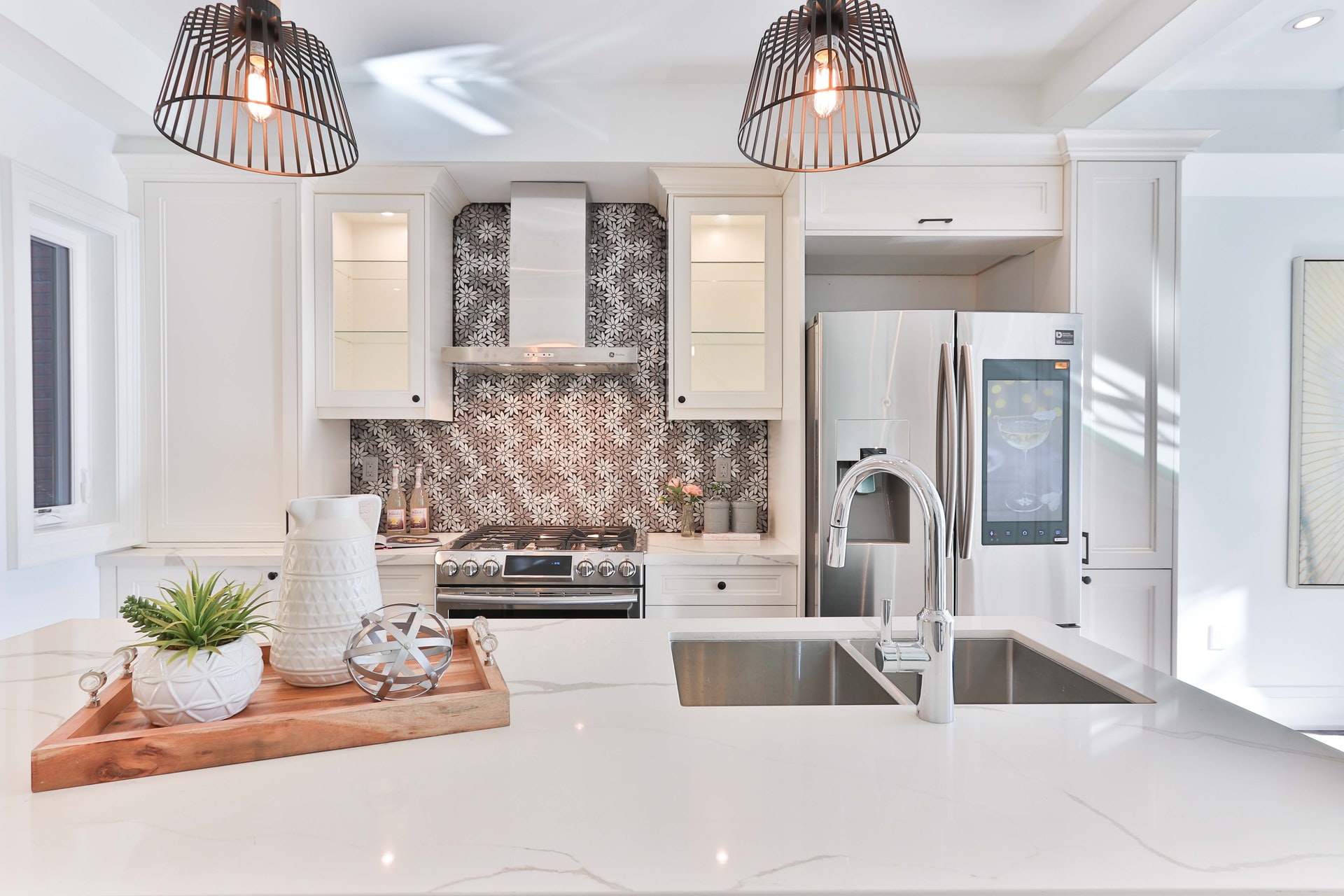
What are the most important aspects when staging kitchens and bathrooms?
When staging a kitchen, it needs to evoke the emotion of wanting to cook and hang out with family and friends. The countertop needs to be free of most things. Less is always better. Create a coffee station and have something like a Kitchenaid mixer if you have one. Also, make sure there is sufficient light. There usually is a dark corner that is perfect for a small lamp. This will help pictures to have the proper illumination. You should have a bowl with colorful fruit or a vase with fresh-cut flowers on the breakfast table.
Bathrooms also need to be free of clutter. White is your best friend in the bathroom. White towels and, if you have a shower curtain, make sure it is white. Fresh and clean in the bathroom is what you want. Do not keep a bathmat on the floor, especially for pictures. You can either have nothing on the countertop or a few little things. It is best to create a relaxing feeling in the bathrooms.
Jodi Bakst | Real Estate Experts
What are the best tips when it comes to winter home staging?
It is important to make sure your holiday decor is neutral for winter home staging. Make it a celebration of the winter season. The winter season also is one where the lighting is not optimal. Focus on using lighting to add a look and feel that can help sell your home. It could be as simple as adding dimmer switches to some of your rooms.
Eric | Dream Home Financing
What role does interior design plays when staging a home?
Interior design and home staging are closely related because they are performed in the same field. However, one should differentiate because they have distinct features. Home staging refers to the process of rearranging and furnishing a home to highlight the most outstanding features for a successful sale. The interior design stands for making the house a “home.” It focuses on the elements that make a house beautiful, fresh, pleasant, and inviting. It is tailored to the tastes or preferences of the intended owner.
Overall they have different functions; however, it is helpful to have these skills together. Imagine a well-staged house that doesn’t have an attractive or pleasurable interior and vice versa. Together, they will increase the chances of generating a sale and matching customer expectations. From this point of view, incorporating and utilizing interior design abilities in the house staging process is becoming a privilege. Interior design will add value to your neatly staged house and help make your project successful. To conclude, the role of interior design while staging a home is rather welcoming if it’s used professionally and efficiently.
Mike| Lendza
What is the secret of holiday home staging?
Selling a home during the holiday season has two advantages; winter brings out serious buyers, and you will face less competition in the marketplace, as most people prefer to sell in spring or summer.
It’s perfectly acceptable to decorate your home while it’s on the market, just be sure to keep decorations neutral so buyers can imagine themselves living there. Pack up any blinking lights and that enormous inflatable snowman for your new home.
Always start your holiday home staging at the house’s exterior, as good curb appeal will ultimately get buyers in the door. Welcome them with a fragrant door wreath, or flank the front door with miniature potted trees. White lights strung around the eaves are always charming.
Inside the house, arouse feelings of seasonal spirit by setting the stage with tasteful holiday decorations and good smells, and never underestimate the effect of a crackling fire in the fireplace and a plate of cookies.
And yes, you can have your Christmas tree. Just be sure the size doesn’t diminish the room where it’s placed. A tabletop tree is an option for a small space. Be sure to keep your home toasty warm, as buyers will feel comfortable and at home.
Marcy File | Stage my own home
How do you define a staging that is successful and on point?
A successful staging has a clear point of view that appeals to the home buyers’ aspirational lifestyle.
Staging is more than just creating aesthetically pleasing interiors. We can also educate buyers through design. As home stagers, we tell the story of the home visually through intentional and strategic design decisions to create a space that home buyers aspire to live in. These strategic decisions can include the intentional placement of home furnishing and lifestyle accessories to help buyers read the room. For example, by creating a clear focal point that showcases the purpose of the room, we can educate buyers on utilizing the space and maximizing their enjoyment of the home through design elements.
Staging also needs to appeal to the aspirational lifestyle of the targeted home buyers. A great stager will consider current trends and the local real estate market and create a staging plan that will appeal to the listing’s targeted home buyers.
Cindy Lin | Staged4more School of Home Staging
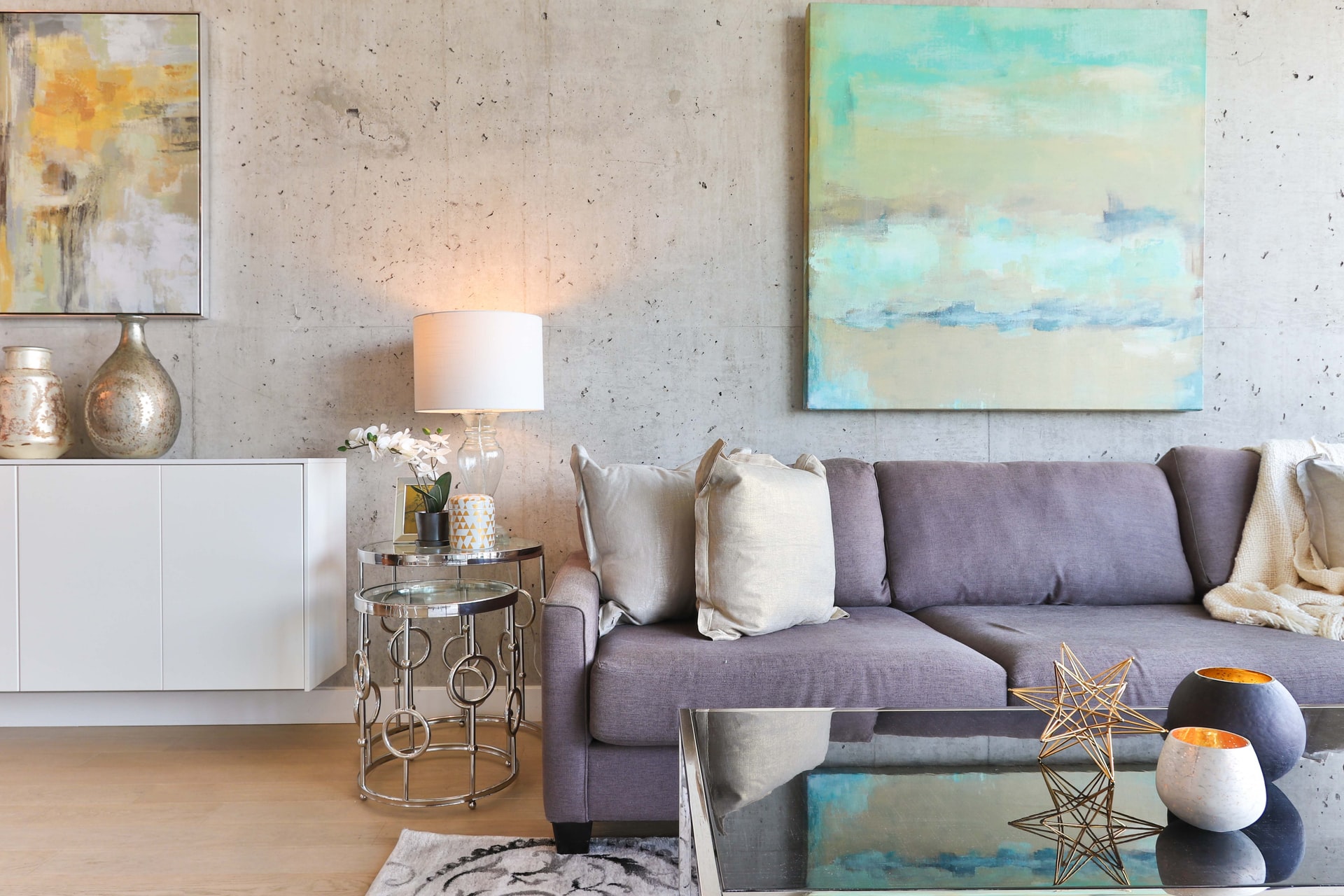
What should I avoid when staging a kitchen?
The biggest thing you want to avoid when staging a kitchen is clutter. Clutter in general detracts from an otherwise beautiful space. It leads to potential home buyers thinking there isn’t enough storage and can make your home seem smaller than it really is.
Ideally, you want to display a few small items grouped together on your countertops, such as a bowl of fruit alongside a vase of fresh flowers or a couple of cookbooks paired with a small appliance. Make sure to organize the inside of your cabinets and pantry as well!
What is the difference between home and virtual staging?
The difference between home and virtual staging is that instead of having to hire a traditional home staging company that delivers furniture to stage a home physically, virtual staging is a special computer-assisted design (CAD) process wherein virtually designed furniture and decor are added to a photo of an empty or outdated room to enhance and make it look captivating.
Virtual staging saves time, but it is also 97% less expensive than traditional home staging, ranging from $25 to $79 per image. Virtual staging is also excellent for decluttering a space, performing virtual renovations, and enhancing the landscaping of your property photos.
Stina Pettersson | Photo Up
Why it’s important to prepare a home for property photography?
It is very important to prepare a home for property photography. There are multiple reasons for that. First of all, our eyes tend to filter out things when we look around. Photography is different. Every unnecessary item clutters the photo, taking away from the concise and easy-to-follow image. Second, some owners follow the photographer moving and removing things. This approach doubles the time required to photograph the property. A photographer may charge more for the wasted time, or he might have another assignment coming up. No one wants to work under time pressure as it leads to mistakes. And finally, many photographers have an additional digital declutter service for these situations. That is to remove clutter during the editing. This extra editing is time-consuming, typically costs per photo, and can easily double the final price on the invoice. Other preparations include hiding the cords (they can look messy in a photo), removing the cars from the driveway, mowing the grass, checking all bulbs, and removing pets and children from the property if possible (it affects their and equipment safety), removing the fridge magnets, etc. All these little things add up, making a massive difference in the final look of the photos.
Anton Gorlin | Anton Gorlin Photography
Why stage a home in a seller’s market?
Staging increases the perceived value of your home in ANY market and can be considered tax-deductible. However, in a seller’s market, staging becomes the additional value-add that nets you even more for your home by creating a more competitive product to market. Buyers are swayed by the emotional connection that staging makes as they walk in and can immediately see themselves living there.
Given the strong market, many sellers have also worked with us to stage their vacant homes instead of renovating and updating given the strong market. In those cases, on-trend staging provides the visuals that help buyers see the potential of a space that may have original fixtures and finishes.
If you live in your home while it’s on the market, a staging consultation pre-listing will always provide an excellent return on investment. The longer you have lived in a home, the more difficult it can be to see it through the eyes of a buyer. The staging plan created through this process tells you how to best merchandise your home with your furnishings and identifies any needed repairs or updates.
Leigh Newport | Staged By Design
The best advice is to rethink not budgeting for some sort of staging in this real estate market because although homes are “flying off the shelves,” the professionally staged homes are getting 1-20% more, according to the National Association of Realtors. Having said that, if you want to DIY, the first thing a seller should do is:
- Objectively view their competition (go online and view the listings)
- Bring in “fresh eyes,” whether it’s a friend or neighbor, and have them try and walk through your home as a buyer would (since we can’t view our homes objectively)
- Start packing up items and furnishings that have no design value in the space (get rid of the 10+-year-old lazy boy, drapes, and accessories that are distracting and create space in the room)
- Deep clean every inch of the home
That’s a start, but they should honestly do the math when a seller can make 5% more by staging.
Audra Slinkey | Home Staging Resource
How to prepare for a virtual staging?
In short, to prepare, you’ll need to get:
- Photos of your property
One of the most important parts is having well-lit, high-quality photos, that is, without pixels, blurring, and taken from the right camera angle, which shows as much of the room as possible. Most of the time, our clients send us professional photos, but if you are confident in your camera and talents, DIY will also work. Just keep in mind that it’s as essential to have high-quality photos for realistic results as ordering virtual staging from professionals.
- Ceiling height.
Ceiling height is used to calculate the correct scale of the furniture, making the whole look natural and realistic.
- Floor plan.
A floor plan helps estimate a possible layout, but we can work without one.
- Your style preferences.
The complexity of further preparations will depend on your relationship with design:
- If you are not into it, probably the best option is to rely on the vast experience of our designers. Just pick a style and a few images you like, and we’ll do the rest.
- If you are somewhere in between – open to suggestions but already have some ideas in mind, feel free to share so we can take them all into account when creating our design.
- If you love the process and want to envision a unique idea of yours, then a mood board and any teeny-tiny detail you wish to implement would be helpful.
In general, the main goal is to get answers to these questions:
Who’s the target audience? What are the location, date of construction, and atmosphere? How do you want this property to feel? Formal or relaxed? How much color? What about patterns? Type of furniture? Type of art? What accessories, materials, and plants do you prefer?
Maria Batryn | Tantify

What is home staging?
Selling your home is a big decision and you’ve invested time and money into your home over the years. There are many things to consider when selling your home and for most sellers getting top dollar for their home is a top priority.
Staging your home is a great way to set yourself apart from other homes for sale and receive top dollar. Home staging is putting the best light on your home, your rooms, your home’s exterior and what your home offers potential buyers.
You reduce (or eliminate) distractions and you highlight the best features of your home. Depersonalize your home, clean and organize it. Don’t forget curb appeal. Keep your yard and surrounding areas inviting and in tip-top shape.
Home staging is especially important during the digital age we live in. 95% of buyers view a home online before physically previewing it. Home staging can make your home stand out when buyers are viewing it online. I’ve heard many buyers say “I have to have that home” after viewing a staged home on the internet.
To attract more buyers, more offers and a higher sale amount taking the time to stage your home is well worth the time!
Jaymie Carroll | Real EstateSpice
What tips could you give to someone that wants to stage their home?
Home staging is a great way to Maximize Return on Investment and Showcase the lifestyle potential buyers could have when selling your home. Home stagers work to present your home in the most marketable manner possible. Home staging is not decorating; it’s about marketing your home to sell.
Whether the home is vacant or occupied, the benefits of professionally staging it are clear. It doesn’t matter if your home is big or small, new or old; what matters is that it’s appealing to buyers and makes them want to purchase it.
Here are some tips to keep in mind if you’re thinking of staging your home:
De-clutter and depersonalize your home: remove personal items such as family photos, collections, and other items that make your home feel like YOUR home. The goal is to make the space feel more like a model home so that potential buyers can envision themselves living there.
- Clean, clean, clean: This one is self-explanatory – a clean home is a more appealing home. Be sure to dust, vacuum, and clean all surfaces (including windows) so that your home shines.
- Bring in some freshness: Add some fresh flowers or green plants to your space. This will add color and life to your home.
- Make any necessary repairs: Fix any broken items, holes in the walls, or other things that need to be repaired. Potential buyers will be looking for any reason to low-ball you on your home, so it’s best to fix anything that needs to be fixed before listing.
- Create a neutral space: This doesn’t mean that your home has to be boring; it just means that you should avoid any strong colors or patterns that could turn buyers off. Stick to more neutral hues and tones so that potential buyers can envision themselves living in your space.
- Highlight your home’s best features: Whether it’s a great view, a cozy fireplace, or a beautiful backyard, make sure that your home’s best features are showcased.
- If your home is currently empty, consider hiring a Home Stager to place furniture and properly stage it. This will make it more inviting and help potential buyers visualize what the space could look like.
- Hire a professional stager: If you’re not sure where to start or how to stage your home, hire a professional stager.
With these tips, you’re sure to make a great impression on potential buyers and help them imagine themselves living in your beautiful home!
Luis G. Santiago | Maison de Campagne
How Does Virtual Staging Work?
Virtual staging is a very powerful marketing tool used by real estate professionals to maximise the sale price of properties at a much lower cost than the traditional physical staging.
The process starts with capturing professional high resolution photography of the space in its baseline state (either vacant or partially furnished).
The images are then populated with Digital 3D models of stylish pieces of furniture, fixtures, accessories, and other home décor items created using advanced 3D modelling & Visualisation software.
The next stage involves setting up of photorealistic lighting along with the texturing of all finishes (walls, floors, ceilings, etc) and their assets to reflect the desired look, feel, and style.
Finally, all images are rendered, and the last finishing touches are applied to showcase the space in its best lighting.
A more advanced solution for virtual staging would be to create a fully staged virtual walkthrough of a property. This brings the idea of virtual staging from a selection of still images, to an interactive 360 degree walkthrough of the entire building that can be viewed on a desktop, tablet, mobile, and in VR.
Sam Faouel | 3D Design Bureau
Why home staging is so important?
One concept that bears heavily on our decision-making process is the term, Confirmation Bias. In real estate, it reinforces the First Impression idea. To explain, if your first impression is really good, everything else you see will be leaning toward reinforcing your first impression. If it is good, we are biased to putting all other impressions in the same category. “This is the house for us.” If the first impression is bad, a great master bath won’t overcome the negative front of the house. The buyers are already mentally checked out. This is another reason to get a great RE photographer. Your first impression is online. Then, at the house, the first impression is outside. A new front door color can give you the Lipstick you need to get them to make an appointment. We have 2 columns in our brain… a YES and a NO. If the curb appeal is great or the first rooms are appealing, our first YES creates a bias toward that column. If you are a realtor or stager, LISTEN UP. If you have a limited budget to stage or improve, put it in the front of the house or yard.
So, what can you do to ensure a good first impression… Call a certified stager to do a walk-thru evaluation. The service starts at $150 and will make sure the priories are addressed. Look through the lens of a camera to evaluate the front yard. Use natural colored cypress mulch. Paint the front door a striking color. Plant some colorful flowers, but choose the right ones for your conditions. Remember that your home buyers want to find the perfect house. Professional Staging can cause them to minimize small imperfections, according to NAR. National Association of Realtors. Staging by a certified stager will sell your listing 4 to 5 times faster.
Becky Harmon | Transformations Staging and Redesign School
How to take good property pictures without spending too much on equipment?
Taking professional-looking photos of a property doesn’t require much fancy equipment. A good camera with a wide-angle lens and a tripod will bring you the best results however these days most good smartphone cameras have built-in stabilization and produce high-resolution images.
Being sure to choose a bright day for doing the photography and decluttering the spaces you will be taking pictures of beforehand will give better results too.
Sheryl | WebYurt.com
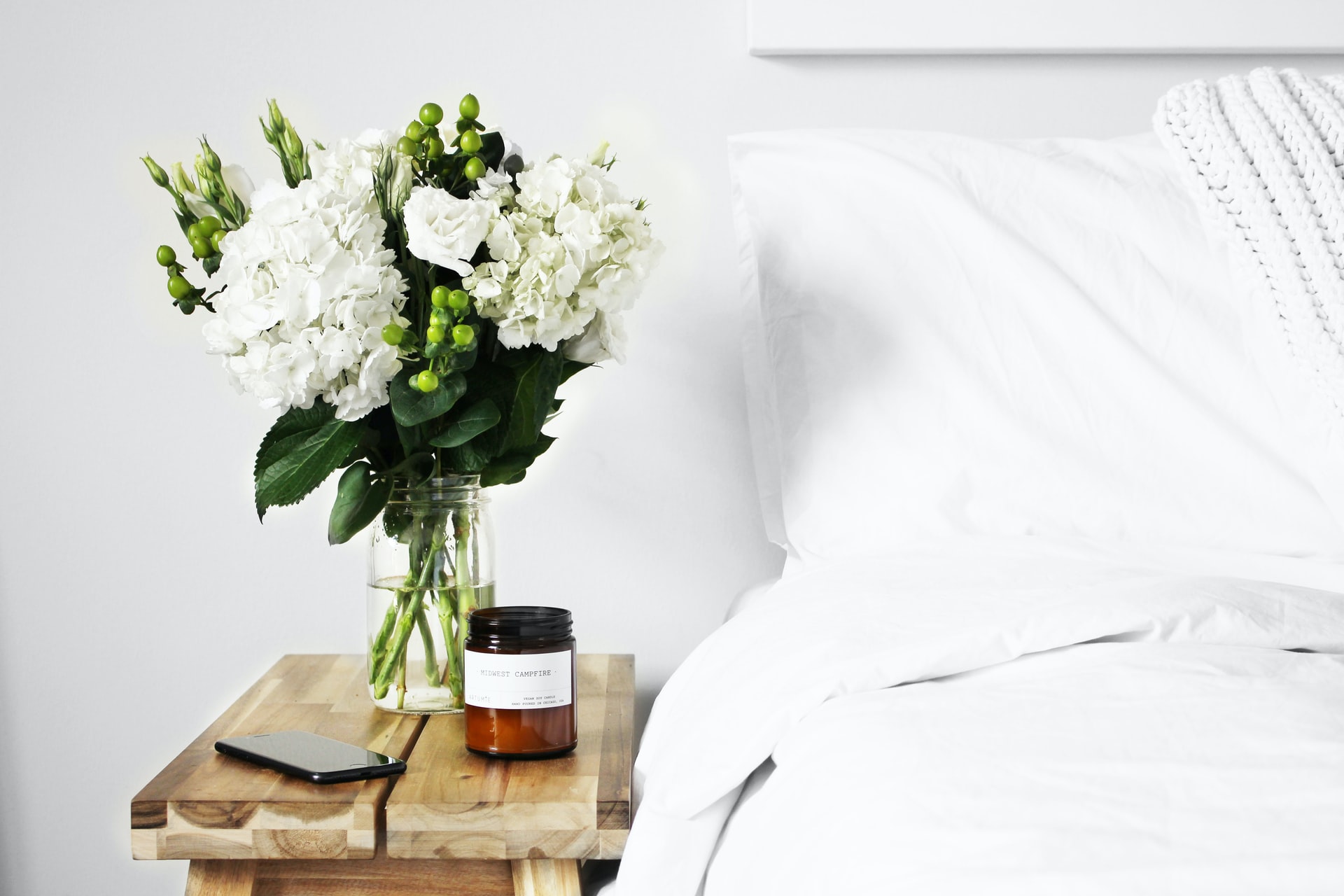
What’s included in traditional home staging?
Most often, traditional home staging is done by a professional home stager who comes in and will “stage” your home before you list it. These professionals can provide furniture and home decor to help you show your home in its best light, highlighting the best features and downplaying those areas that could use improvement or updating. By focusing on the right design elements and styles, a home stager can make your home look as inviting as possible, allowing buyers to imagine what it would be like to live in your home or how their belongings may fit in the rooms.
Depending on your individual needs, the extent of your home staging can vary. Some buyers may only need minor decorating or rearranging, while others may want entire home furnishing and staging, especially if the house is currently empty. If you are a homeowner looking to buy and sell simultaneously, Reali’s Buy Before You Sell can help you buy your next home with cash, move in faster than ever before, then sell your current home for more. Depending on your location and the staging package selected, Reali will even help pay for and arrange the staging of your home. You can start the process by finding a Reali Agent near you.
Daniel Tanori | Reali
Which one do you recommend more, home staging or virtual staging?
It’s been my experience that home staging if done well, will always beat virtual staging. Finishing out a space with on-trend furniture and accessories will make the room look like something out of a magazine. People are naturally drawn to it! Like most things, there’s a range in ability with staging companies so it’s smart to shop around.
While less expensive, virtual staging still has that element of artificially that most people will pick up on either consciously or subconsciously. Virtual staging can help people who lack spatial planning skills understand the purpose of the space. But in my market, there’s a debate about whether virtual staging of empty space is actually worth the cost.
With that said, what’s even more important is the quality of the photographs. Top agents consistently work with the best photographers available. These photos will be the first thing truly motivated buyers will analyze. Impactful images will result in more showings, which will lead to faster home sales. It’s worth paying for the best.
Tre Pryor | Tre Pryor
What would be your best advice for luxury home staging?
When staging luxury homes, always remember that you don’t want anything to come off as a big “project” for incoming buyers. In a luxury clients expect the home to be move in ready!
Start by updating and modernizing the home where you can. Try to tackle simpler items that scream outdated! Swapping out the cabinet hardware, plumbing fixtures, doorhandles, and outlet covers are simple ways to make a home feel more updated.
Next be sure to rid your house of clutter. Make sure bathroom and kitchen countertops are clean and tidy. Consider removing bulky furniture like extra side tables, or chairs to make rooms feel more open. Finally, be sure to remove personal items like family photos, and sentimental decor. All of this will help a buyer to better envision themselves living in your home.
Finally make sure your home is sparkling clean! Address any spots/stains on walls or furniture. Clean where dust accumulates like ceiling fans and vents. Don’t forget to deep clean your appliances especially if they are part of the sale. The way your home is cleaned will tell a buyer how you have been caring for the property, so make sure to have it in the best condition possible!
Taylor Fiske | Flourishmentary
What Homes is Virtual Staging Best Suited For?
Virtual staging is ideally suited to stage empty rooms or completely vacant homes, thus enabling prospective buyers to better envision the space. An often-overlooked application of virtual staging is for properties that are still under construction but not quite finished and photo-ready. Virtually staging a home in this scenario, gives the builder an edge in getting the property on the market sooner.
Emanuel Mozes Photography | Emanuel Mozes
What are the most common mistakes when virtual home staging?
Some of the most common mistakes we encounter as photographers in regards to virtual staging include:
Not notifying us beforehand that you will be virtually staging the room. The angles and height at which we normally shoot homes are not optimal for virtual staging. By letting us know you will be staging beforehand, we can be sure to get the best shots to produce the most attractive final product.
Not selecting furniture packages that fit the existing paint, flooring, and design. Virtual staging is an investment, and choosing virtual furniture packages that will look out of place in a room is silly. Keep the existing style in mind when choosing your virtual furniture package. When in doubt, ask the stagers!
Not removing all items from a room is virtually staged. Sure, we can photoshop it out, but that usually comes at a greater cost. It is always easier for both the client and the editing team to have an empty room to work with.
You might also want to consider 3D modeling for interior design and architecture.
Using advanced-level software, three-dimensional modeling, or 3D modeling, is the development process of mathematical representations of particular or entire surfaces of any object in three dimensions.
3D artists create these innovative 3D models. When looking for 3D modeling services, you should speak with an agency or 3D artist.
As you learn, there are many aspects to consider when getting ready for a property for sale. Although you can do it yourself, it’s better to hire a professional to do the job. You have to choose what is best for your house and what you can do to sell it faster and to the highest bidder.
This Q & A is still developing.

